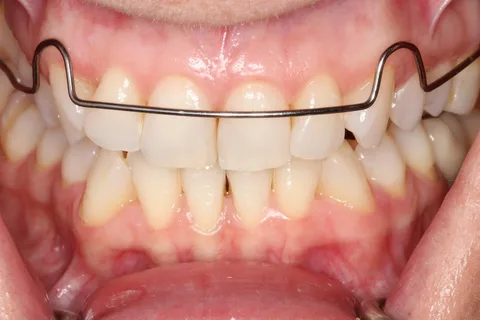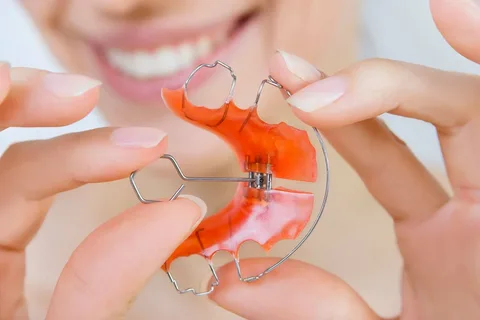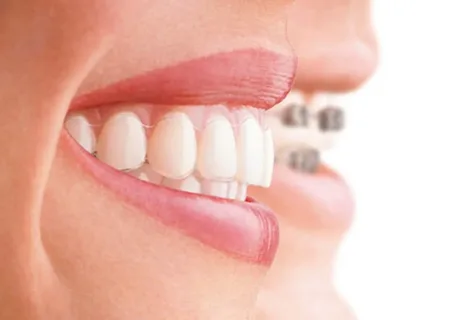General characteristics of dentition anomalies
Machine translation
Original article is written in RU language (link to read it).
Anomalies of the dentition should be considered in three planes, mutually perpendicular to each other, thus the following types of anomalies are distinguished:
sagittal plane: lengthening of the dental arch, shortening;
vertical plane: dentoalveolar shortening of some sections of the arch, dentoalveolar lengthening;
horizontal plane: narrowing; expansion of the dental arch.
Learn more about the treatment of dentition anomalies in the webinar Diagnostic and therapeutic approaches to aligner therapy in growing patients .
Sagittal plane. Lengthening the dental arch
Diagnosis of this pathology is possible by determining the total length of the dental arch or only its anterior segment.

Figure 1. Anomaly of the lower jaw dentition.
Etiology
The following reasons are identified:
supernumerary teeth in the dentition,
mixed or mouth breathing,
abnormal position of the tongue,
swallowing disorder
bad habits,
macrodentia,
distal eruption of posterior teeth,
protrusion of incisors.
Clinical manifestations
The front teeth peek out from under the lip.
Three are defined.
As a rule, pathology in other planes is added.
Principles of treatment
The approach to treatment is determined by the age of the patient.
Temporary bite :
rejection of bad habits,
normalization of functions,
self-regulation of minor deviations is possible,
vestibular plates according to indications.
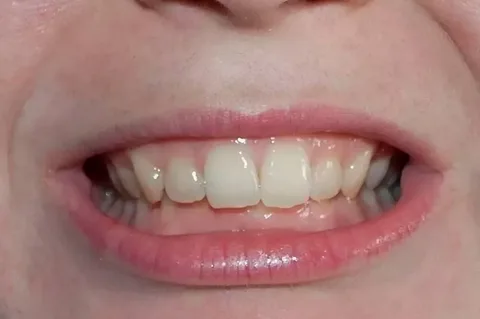
Figure 2. The result of dentoalveolar shortening in the area of the lateral teeth.
Mixed and permanent dentition:
Orthodontic devices of various designs are added to the measures of the first period; tooth extraction is indicated in some clinical situations.
To shorten the dentition, mechanically operating devices are made, the action of which can be combined with extraoral and intermaxillary traction. During the period of mixed dentition, standard elastopositioners have a positive effect.
Shortening of the dental arch is also possible due to the mesial displacement of the chewing teeth, which is performed after the extirpation of the first premolars, carried out using a multibonding system.
Sagittal plane. Shortening of the dental arch
Etiology
The following reasons for shortening of the dentition are identified:
teething of irregular shapes,
size anomalies (microdentia),
edentia,
mesial eruption of posterior teeth,
retrusion of incisors,
jaw underdevelopment,
presence of bad habits,
carious lesions of the contact surfaces of teeth,
premature tooth loss,
incorrect laying of rudiments,
abnormal position of teeth outside the arch.
Clinical manifestations
Pathology occurs only on one side or bilateral.
Retraction of the lip is observed.
If a deep bite occurs, a shortening of the lower third of the face is noted.
The lower row is shortened in case of distal occlusion, the upper row is shortened in case of mesial occlusion.
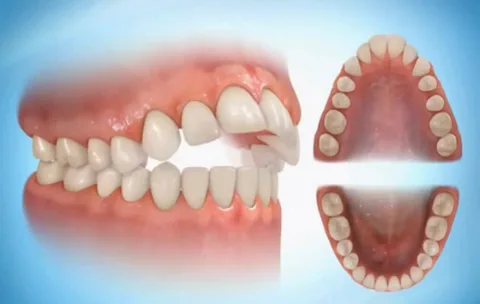
Figure 3. Dentoalveolar shortening in the anterior region.
Treatment
To lengthen the dentition, orthodontic appliances are made equipped with screws, springs, and sectoral cuts. In the case of pathological phenomena in other planes, the design of the orthodontic apparatus is complicated by additional devices. Not only removable devices can be used, but also non-removable and functional ones.
Vertical plane. Dentoalveolar elongation
The presence of anomalies in the dental arches in the vertical plane is significantly influenced by hereditary predisposition.
The causes of dentoalveolar elongation are the following:
non-carious and carious tooth decay,
pathological abrasion,
premature tooth loss,
pathological functioning of the dental system,
children have bad habits.
Diagnostics
The lack of tight interdental contact causes the formation of dentoalveolar extension in this segment. With dental alveolar elongation, dysfunction occurs, leading to poor chewing efficiency, overload of periodontal tissues, injury to the oral mucosa, which creates the preconditions for the subsequent development of periodontal diseases, and increased abrasion of hard dental tissues involved in chewing.
The diagnosis is based on the results of a clinical examination, the study of diagnostic models, anthropometric indicators, and an assessment of the results of an x-ray examination.
Principles of treatment
During the treatment of dentoalveolar elongation in the anterior region, the orthodontist must solve the following most important tasks:
eliminate the causes that prevent dentoalveolar elongation in the area of the chewing teeth, ensure their separation;
prevent dentoalveolar elongation in the area of the anterior teeth;
correct the shape of the dental arches and, if necessary, adjust the position of individual teeth;
correct the position of the jaw;
create conditions for further jaw growth.
Correction of pathological abnormalities is possible using different methods; it is only important to take into account the etiological factor and the age of the child.

Figure 4. Treatment with a multibonding system.
Temporary bite
Chewing tough foods, which activates jaw development.
Restoration of baby teeth destroyed by caries, if necessary, their restoration with the help of artificial crowns.
Rejection of bad habits.
If necessary, plastic surgery of the lingual frenulum.
In case of early loss of primary molars, they are replaced with removable dentures.
Mixed bite
Active treatment begins through the manufacture of orthodontic structures. The separation of the chewing teeth against the background of the eruption of the first permanent molars causes a gradual dentoalveolar elongation in the area of the distal segments, and a reduction in the depth of the incisal overlap is observed.
At the age of 10-12 years, a physiological increase in the height of the bite is used when premolars, canines, and second molars are introduced into occlusion.
Dentoalveolar shortening
Most often observed in the frontal region, in patients only the chewing teeth close.
The key causative factor is the habit of sucking on an object, incorrect position of the head during sleep, the habit of placing the tongue in a defect in the dentition in case of premature tooth extraction.
The abnormal position of the tongue prevents normal teething and causes the formation of an open bite. Pathological articulation of the tongue is often caused by shortening of its frenulum. All of the above causative factors contribute to the following functional changes: swallowing, chewing, and sound production become more difficult. The vertical gap provokes mouth breathing, dryness of the oral mucosa and respiratory tract, which leads to periodontal diseases and frequent infectious processes in the upper respiratory tract.
Principles of treatment
The main task is to wean the child from bad habits, ensure the normal position of the tongue in the oral cavity both during function and at rest, teach the patient to breathe through the nose, keep the lips closed, control the position of the tongue when swallowing and sound production in order to form the right habits.
If necessary, plastic surgery of the frenulum of the tongue is performed, and myogymnastics are prescribed.
Horizontal plane. Anomalies of the dentition
In the horizontal plane, the most common anomaly is a narrowing of the dentition, which in most cases is also combined with a pathological shape of the arches.
Etiology
Heredity.
Impaired functions.
Bad habits.
Premature loss of baby teeth.
Pathological functioning of masticatory and facial muscles.
The diagnosis is made on the basis of a clinical examination, a study of diagnostic models, and the results of one of the x-ray examinations.
Principles of treatment
It is necessary to achieve expansion of the dental arches, ensure the correct position of the teeth, and identify orthodontic indications for subsequent surgical treatment: tooth extraction, compactosteotomy, decortication, tongue frenuloplasty.
To correct malocclusions in the horizontal plane, both fixed appliances and removable structures are used.
Expansion of dental arches
This pathology of the dentition is much less common compared to narrowing, in most cases it is combined with other malocclusions.
Etiology
Key causal factors:
bad habits,
abnormal formation of tooth germs,
pathological functioning of the masticatory and facial muscles,
late change of primary teeth,
the hereditary factor is characteristic of the gnathic form of expansion,
neoplasms,
incorrect position of the lower jaw,
abnormal eruption of lower chewing teeth.
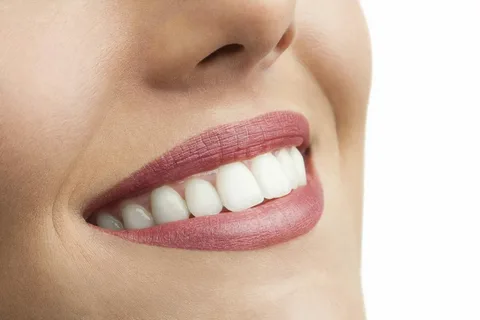
Figure 5. Treatment result.
Principles of treatment
To expand the dental arches, removable and non-removable orthodontic mechanically operating devices are used; in some clinical situations, an integrated approach is used - surgical manipulations are used.
About planning space-preserving structures that do not limit growth, in the webinar Managing space in the dentition at everyday children's appointments .


